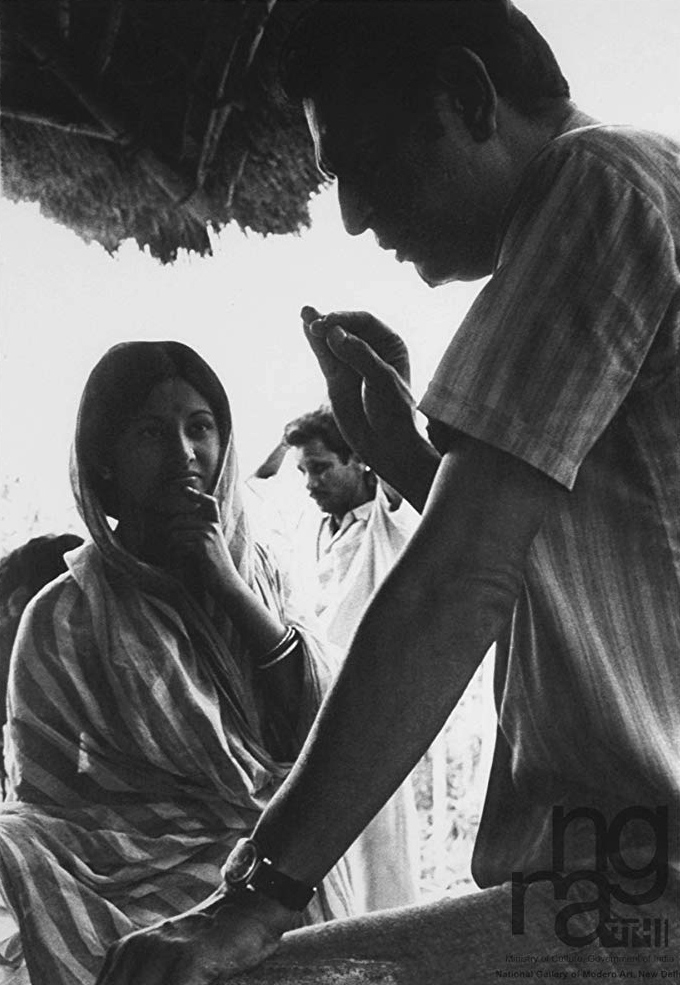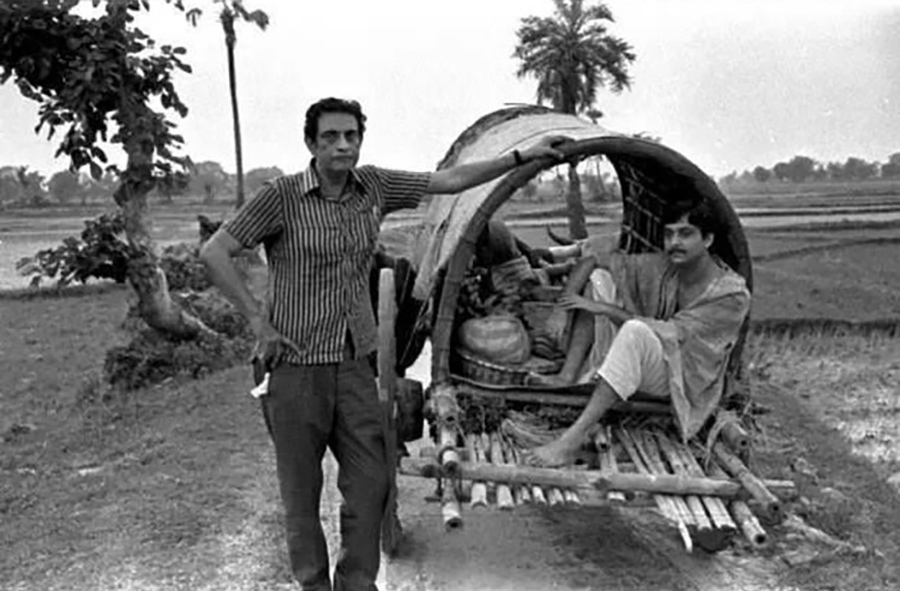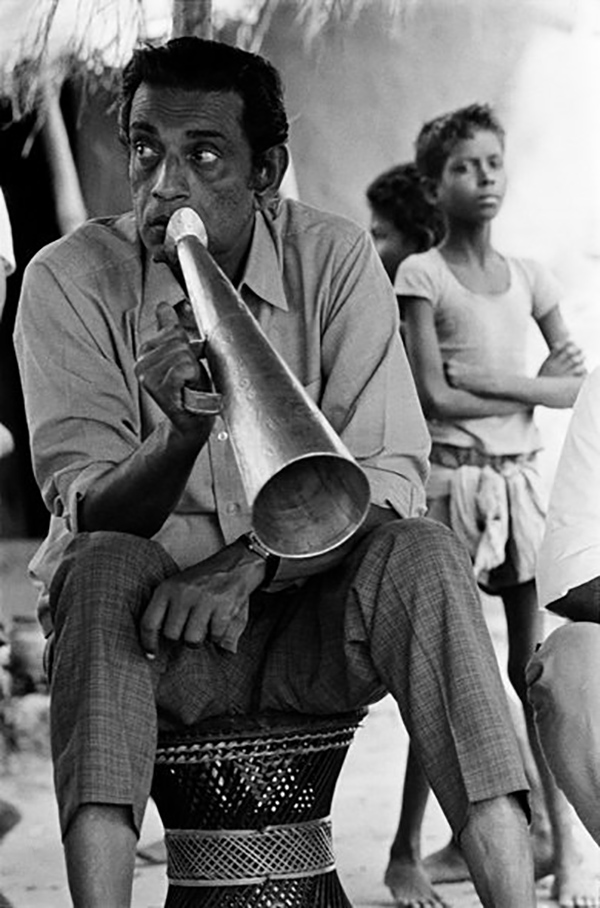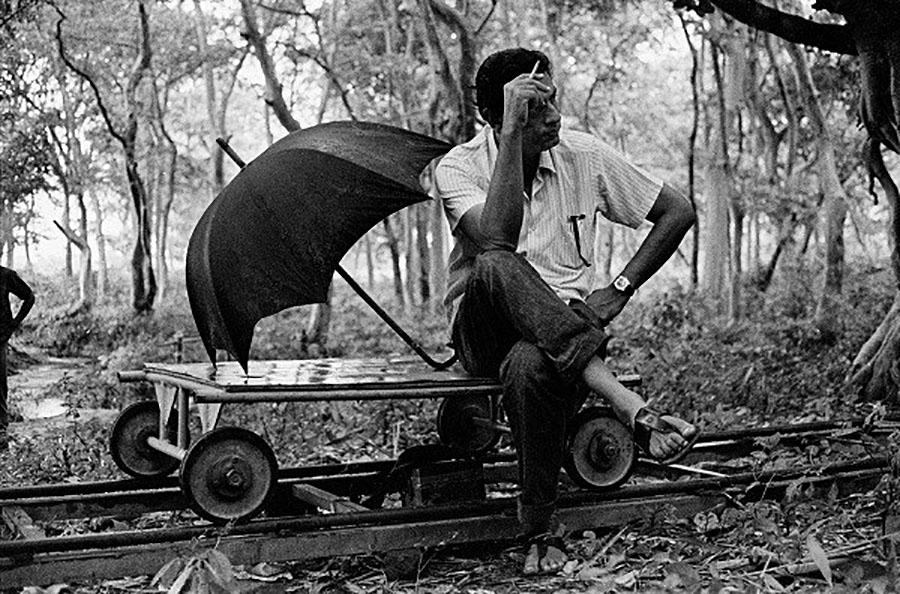Ashani Sanket (Distant Thunder)
1973, India. 101 min, Color, In Bengali with subtitles.
Summary
The film is set in 1943-44, when the famine struck Bengal during the British rule in India. It was a man made famine. As the British government cornered the civilian food supply for its armies, the people starved. The famine claimed the lives of five million people. The story takes place in a small village during the World War II. The famine affects the lives of the families in different ways.
Gangacharan, an educated Brahmin, has recently arrived to settle in the village with his wife. He decides to teach and conduct religious ceremonies in exchange for being supported by the villagers. The villagers readily agree. His wife, Ananga, is a sensuous woman. She is sensitive, giving, and devoted to her husband.
The distant World War II changes the village. Gangacharan is only little more informed than the villagers. He knows that Japan has taken over Singapore but he has no idea where it is. As a few airplanes disturb the peaceful sky, the word goes around that the war will result in a scarcity of rice. The price of rice soars as the traders hide their stocks to make huge profits.
To eat, the villagers are reduced to animal-like existence, forced to beg for food. Gangacharan, shrewd and stingy, has managed to keep himself supplied with food but it may not last long. Ananga offers to work for food but Gangacharan is shocked at the idea of her doing manual labor. Soon, he is forced to change his views and Ananga goes to work with other village women.
A man with burnt face (scarface) offers a married village woman – Chutki – a bribe of rice to go with him. She refuses but later the hunger drives her to agree.
Ananga offers her gold bangle to Gangacharan to exchange it for rice. As he goes to a nearby village to in search of rice, she goes into the forest with Chutki and another woman to look for wild potatoes. Not used to manual lab our, Ananga sees a flower and goes for it. The village women find some potatoes. A man tries to take Ananga; Chutki kills the man with the bar she used to dig out the potato.
But Chutki herself would rather live in dishonor than die of hunger. Once again, she joins the scarface despite her revulsion towards him.
An untouchable-caste woman dies of hunger; the first starvation death in the village. Gangacharan, breaking the taboo, picks up her hand take her pulse. He feels obliged to give her a proper cremation.
Even as we learn that Ananga is pregnant, we see the villagers leave in search of food in silhouettes. The screen is filled with a statement – “Over five million died of starvation and epidemics in Bengal in what has come to be known as the man-made famine of 1943.”
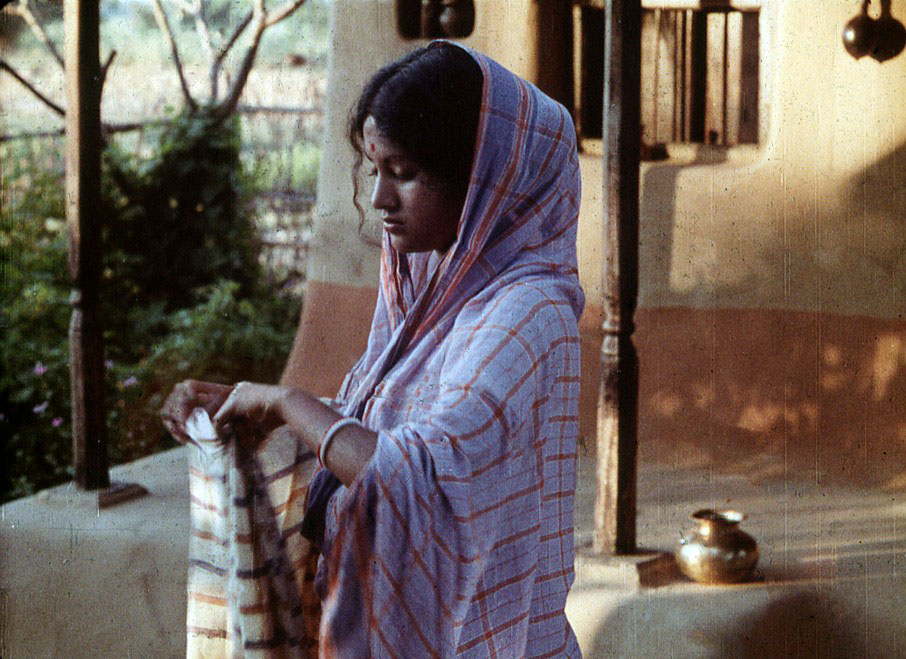
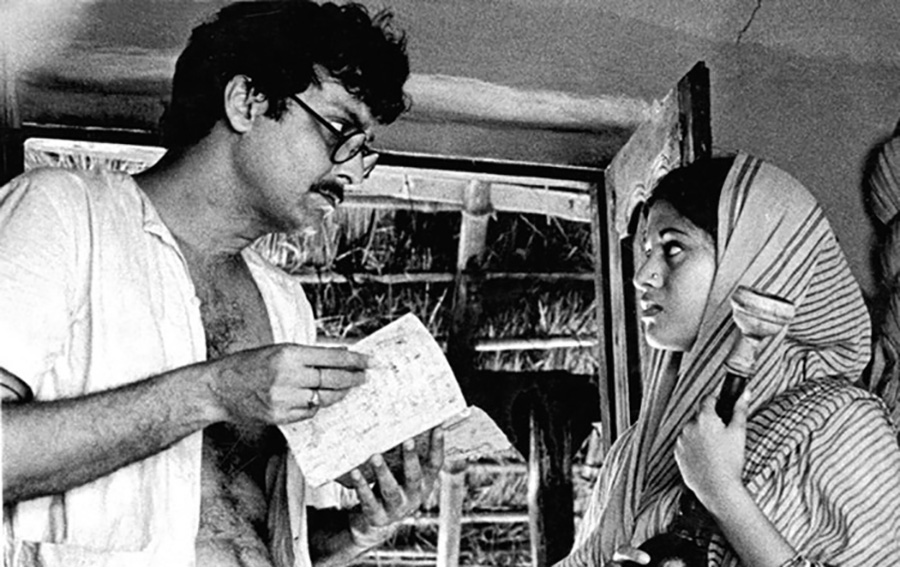

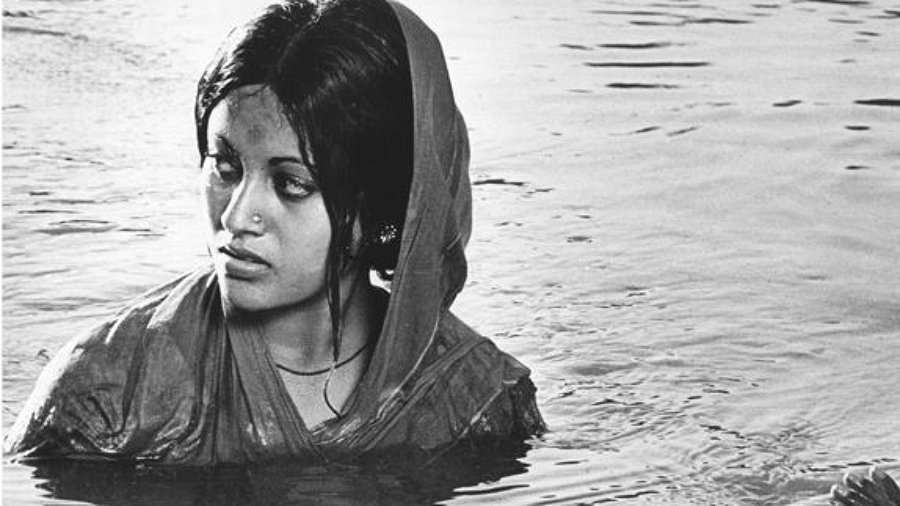
Comments
Soumitra Chatterjee, a Ray regular, who played Apu in Apur Sansar, plays Gangacharan. The film is based on the novel ‘Asani Sanket’ by Bibhutibhushan Banerjee. He also wrote ‘Pather Panchali’ and ‘Aparajita’, which were adapted by Ray for the Apu Trilogy films. Ray uses color to contrast between the Nature filled with life and lushness and gradual slipping away of life from the people. They are dying despite a good rice crop. The film begins with an image of Ananga in a pond with her hand projecting out of water like a water lily.
The film is not about the famine but the events leading to it at a micro scale. In stead of rotting dead bodies, what we see is the changing life and the behavior of the villagers.
What others say


Awards
- Presidents Gold Medal for Music Direction, New Delhi, 1973
- Best Regional Film, New Delhi, 1973
- Golden Bear, Berlin, 1973
- Golden Hugo, Chicago, 1974
Credits | |
| Producer: | Balaka Movies (Sarbani Bhattacharya) |
| Screenplay & Direction: | Satyajit Ray, Based on the novel: ‘Asani Sanket’ by Bibhutibhushan Banerjee |
| Cinematography: | Soumendu Roy |
| Editing: | Dulal Dutta |
| Art Direction: | Ashoke Bose |
| Sound: | J. D. Irani, Durgadas Mitra |
| Music: | Satyajit Ray |
Cast | |
| Gangacharan Chakravarty: | Soumitra Chatterjee |
| Ananga, his wife: | Babita |
| Biswas: | Ramesh Mukherjee |
| Moti: | Chitra Banerjee |
| Dinabandhu: | Govinda Chakravarty |
| Chutki: | Sandhya Roy |
| Jadu (scarface): | Noni Ganguli |
